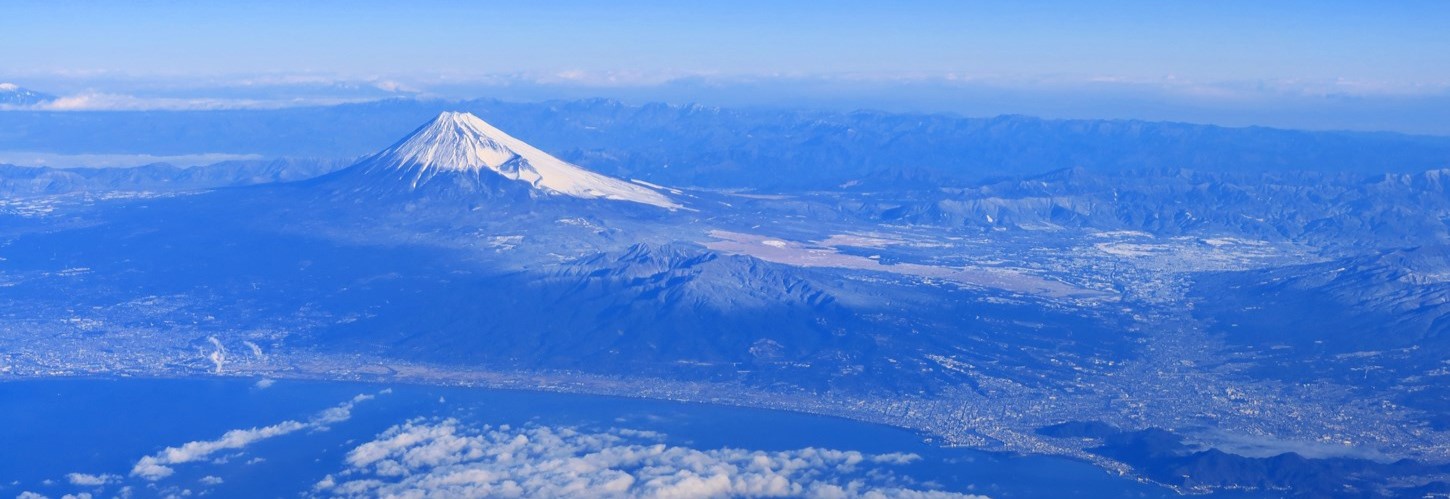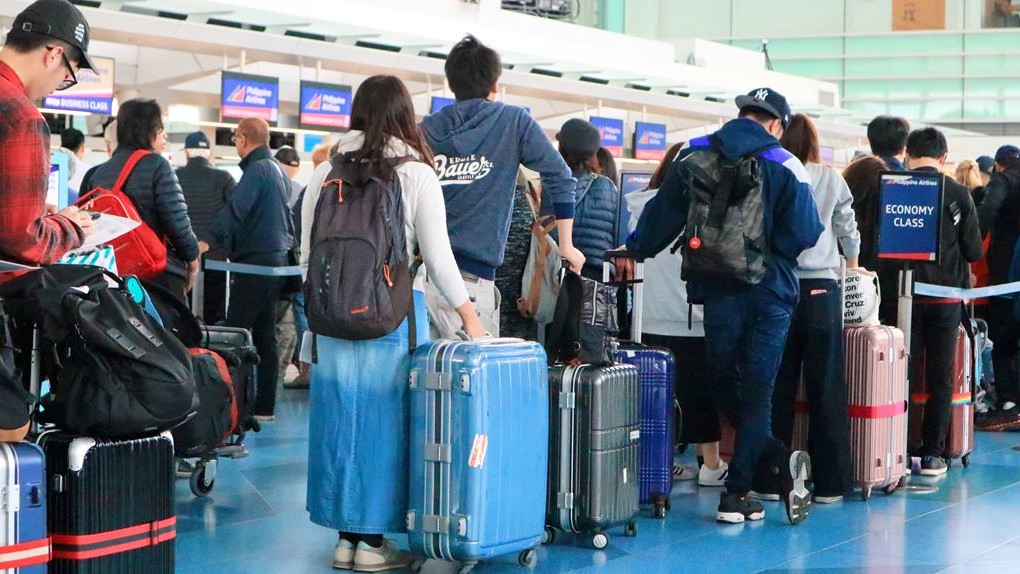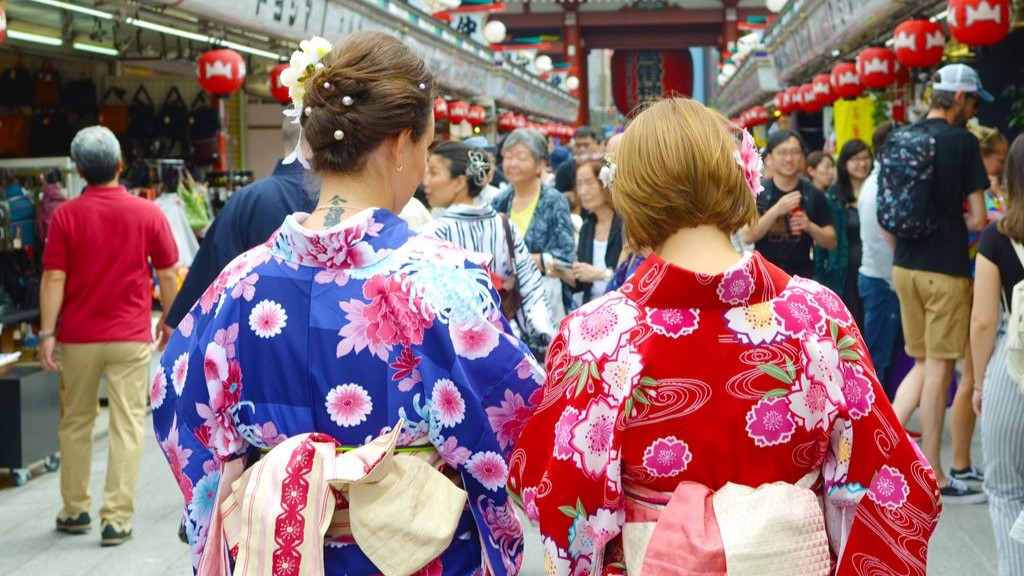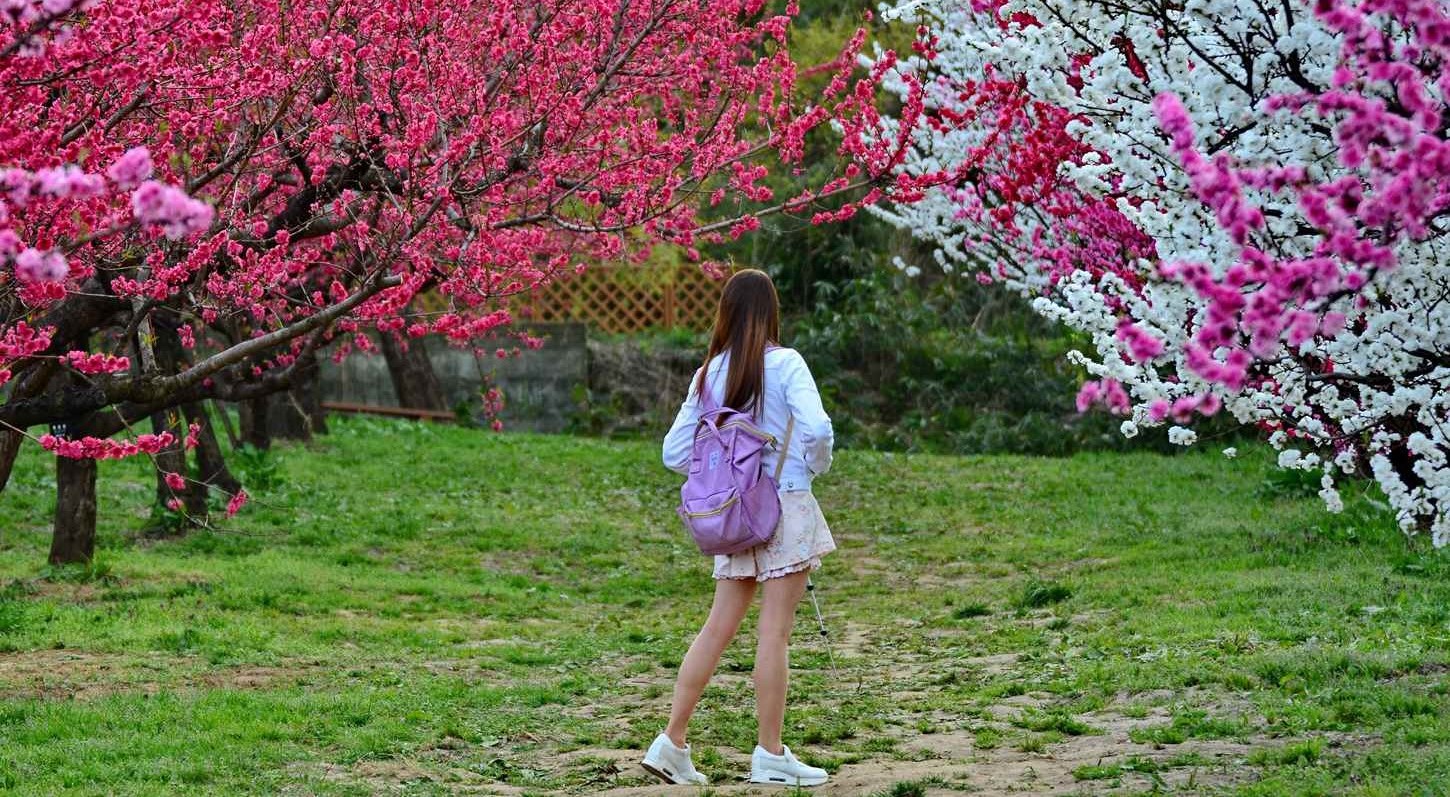Overview
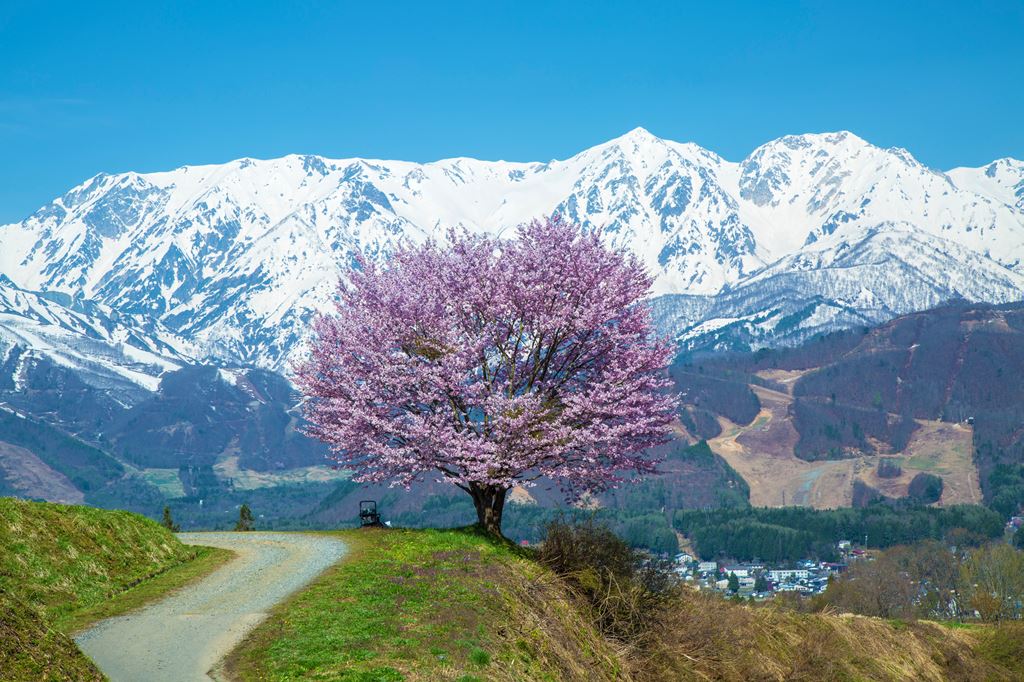
Cherry blossoms of Nodaira in Hakuba village in Nagano prefecture of Japan.The back is the Alps.
Since our country is very long from north to south, there are many climate zones from subarctic to subtropical. The average precipitation in Japan is said to be about 1,700 mm per year. Globally, precipitation is relatively high. This is because Japan is an island country surrounded by the sea on all sides, and the atmosphere that comes across the sea contains a large amount of water vapor that evaporates from the sea surface.
In summer, clouds coming from the Pacific bring rain. From July to October, typhoons come from the south and cause damage. On the other hand, in winter, clouds coming from the Sea of Japan bring snow and rain. The flatlands and mountains along the Sea of Japan get a lot of snow, especially in the northern areas from Hokkaido to the Tohoku and Chubu regions.
At the turn of the season, the weather becomes unstable. March has relatively more rainy days and can be windy. From June to mid-July, except for some areas such as Hokkaido, the rainy season called “Tsuyu” begins. September also has relatively many rainy days. During these interseasonal periods, the weather can be unpredictable and not ideal for travel. Conversely, since it is the off-season, flight and hotel fares are relatively cheap.
The best seasons for tourists are spring from late March to May and autumn from October to November. In fact, tourist spots all over the country are bustling with tourists during these times.
If you go to Japan in summer, please pay attention to typhoon information. Especially from July to September, trains and planes may be canceled due to typhoons. Make sure to check the weather forecast.
Recently, due to abnormal weather, the damage caused by heavy rain is increasing. Especially from June to July, heavy rains can occur in western Japan, mainly in Kyushu.
Japan’s Climate Divisions
In winter, the Japanese archipelago has widely different climates in different regions.
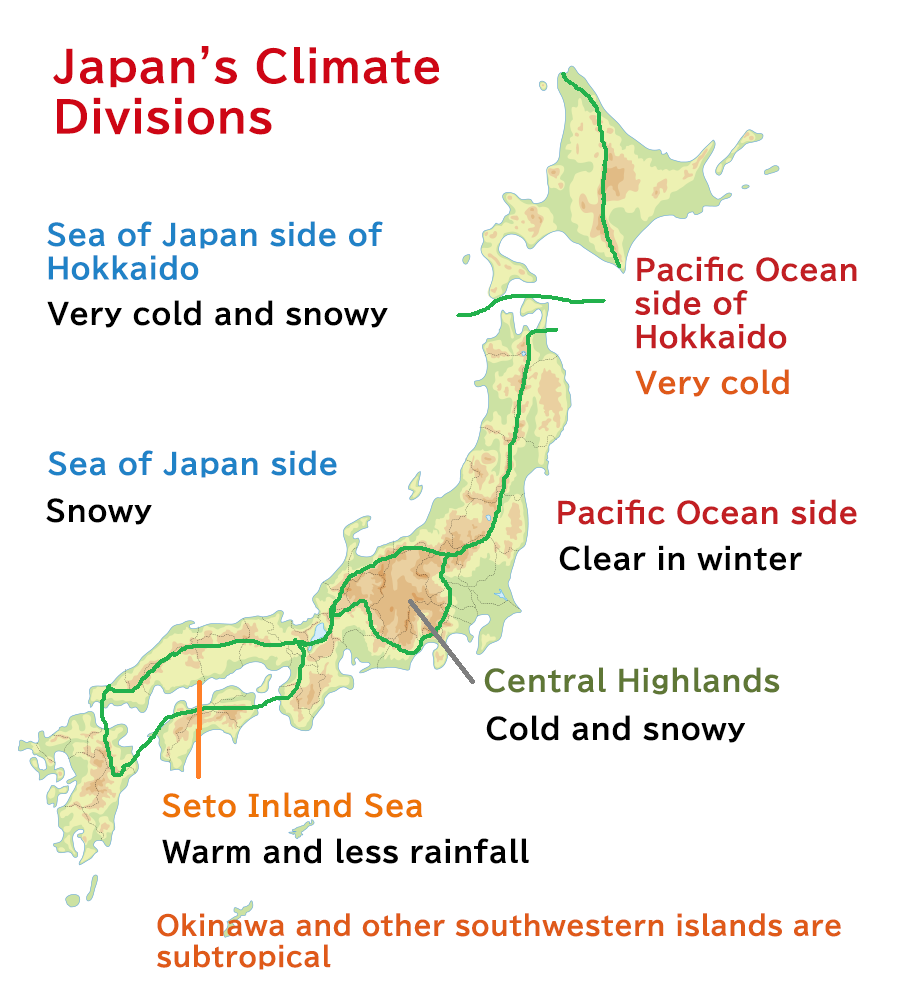
1: Climate of Hokkaido
1-1: Hokkaido (Sea of Japan side)
The climate of the Sea of Japan side of Hokkaido is characterized by its heavy snowfall in winter, with an average temperature of -3 degrees Celsius. In summer, the temperature rises to around 20 degrees Celsius, with frequent rainfall. The region is known for its ski resorts and winter sports, as well as its natural beauty, including the famous “Snow Wall” along the Tateyama Kurobe Alpine Route.
1-2: Pacific side of Hokkaido
The Pacific side of Hokkaido has a milder climate than the Sea of Japan side, with an average temperature of around 5 degrees Celsius in winter and 20 degrees Celsius in summer. The region is known for its seafood and agricultural products, including dairy products and vegetables.
2: Climate of the Sea of Japan side (excluding Hokkaido)
The Sea of Japan side of Japan, excluding Hokkaido, has a humid climate with heavy snowfall in winter and hot and humid summers.
3: Climate of the Pacific Ocean side of Hokkaido (excluding Hokkaido)
The Pacific Ocean side of Japan, excluding Hokkaido, has a milder climate than the Sea of Japan side, with an average temperature of around 10 degrees Celsius in winter and 25 degrees Celsius in summer. The region is known for its beaches, seafood, and agricultural products, including rice and fruit.
4: Climate of the central highlands of Honshu
The central highlands of Honshu have a cool, humid climate with heavy snowfall in winter and mild summers. The region is known for its natural beauty, including the Japanese Alps and the famous “Snow Corridor” in Toyama, as well as its agricultural products, including soba and apples.
5: Climate of the Seto Inland Sea
The Seto Inland Sea has a mild climate, with an average temperature of around 10 degrees Celsius in winter and 27 degrees Celsius in summer. The region is known for its islands and bridges, as well as its seafood, citrus fruit, and olive oil.
6: Climate of the Nansei Islands
The Nansei Islands have a subtropical climate, with warm temperatures year-round and high humidity. The region is known for its beaches and coral reefs, as well as its unique culture and cuisine, influenced by its location between Japan and Southeast Asia. The islands are a popular destination for diving and snorkeling.
Winter: Snow on the Sea of Japan side, clear skies on the Pacific side
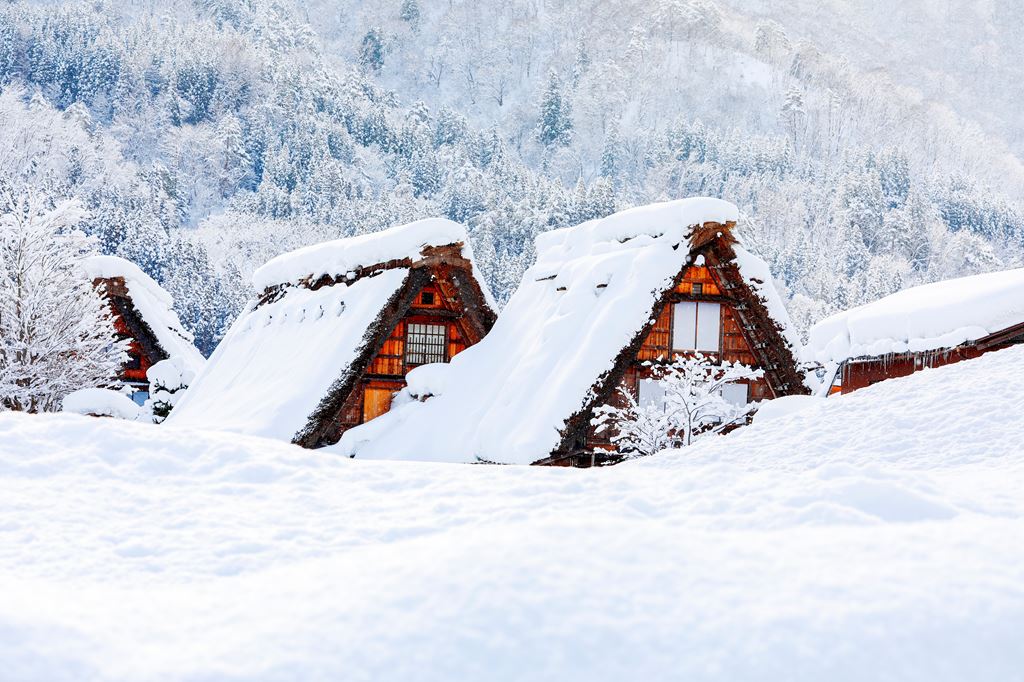
Shirakawago village with the Snow falling day Gifu Chubu Japan
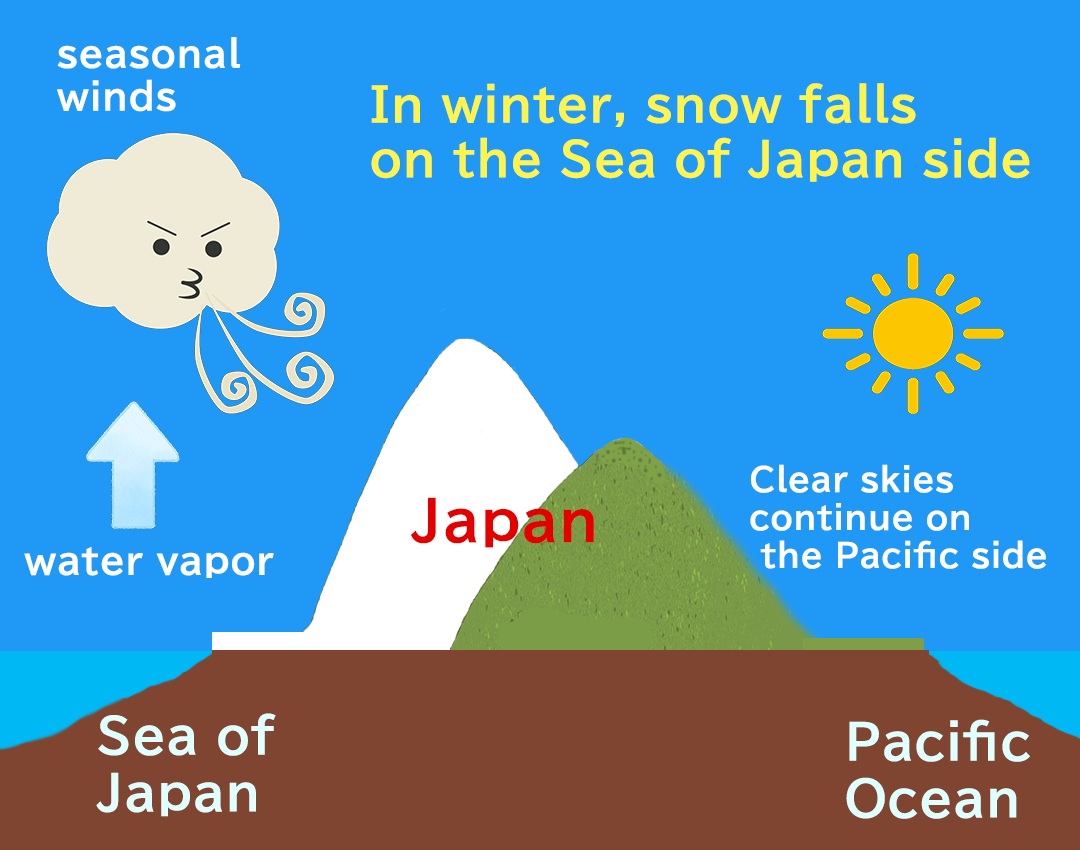
The difference in weather conditions between the Sea of Japan side and the Pacific Ocean side of Japan during winter is caused by the interaction of several meteorological factors.
First, Japan is located in a region of the world where several large-scale atmospheric circulations intersect, including the subtropical high-pressure system, the Siberian high-pressure system, and the Aleutian low-pressure system. In winter, cold and dry air from the Siberian high-pressure system flows southward over the continent of Asia, while warm and moist air from the Pacific Ocean flows northward towards Japan.
Second, the Sea of Japan is a relatively narrow body of water located between Japan and the Korean peninsula. The prevailing winds in winter blow from the west towards the east, which causes the moist air from the Sea of Japan to collide with the mountain ranges on the western side of Japan. As the air rises over the mountains, it cools and its moisture condenses into snow, which falls on the plains and mountains on the Sea of Japan side.
On the other hand, the Pacific Ocean side of Japan is relatively sheltered from the cold air and moisture flowing over the Sea of Japan. As a result, the air is drier and clearer, and the sunshine can reach the plains and mountains more easily. This creates clear and sunny days on the Pacific Ocean side during winter.
Overall, the difference in weather conditions between the Sea of Japan side and the Pacific Ocean side of Japan during winter is a result of the complex interactions between large-scale atmospheric circulations, prevailing winds, and local topography.
Spring: April and May are the best months
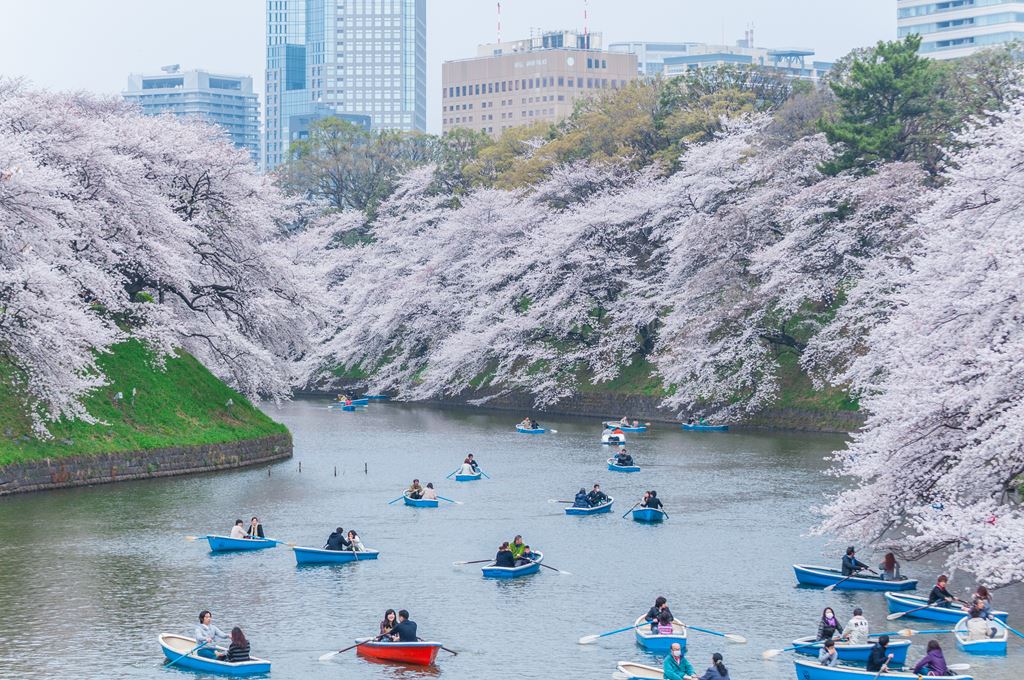
Tokyo in April with beautiful cherry blossoms, Japan
In Japan, March is a time of transition from winter to spring, which brings unstable weather. However, as spring arrives, beautiful cherry blossoms cover the country from late March to April. This is the best season for spring travel. After that, Japan experiences a rainy season from June through about July 20.
If you are traveling to Japan during the spring, it is important to be prepared for the weather. It can be unpredictable and change quickly, so be sure to bring clothes that are appropriate for both cold and warm temperatures. Additionally, it is important to stay updated on weather forecasts to avoid any potential disruptions to your travel plans.
During the cherry blossom season, many popular tourist spots can be crowded. It’s a good idea to plan ahead and make reservations for accommodations and activities in advance. You can also enjoy the cherry blossoms in less crowded areas such as local parks.
During the rainy season, it’s important to have rain gear such as an umbrella or raincoat. Some outdoor activities may be affected by the rain, so be sure to check if they are still operating before you go.
Overall, spring is a beautiful time to visit Japan with its cherry blossoms and mild weather. Just remember to be prepared for the changing weather and plan ahead to make the most of your trip.
Summer: Best after the end of the rainy season
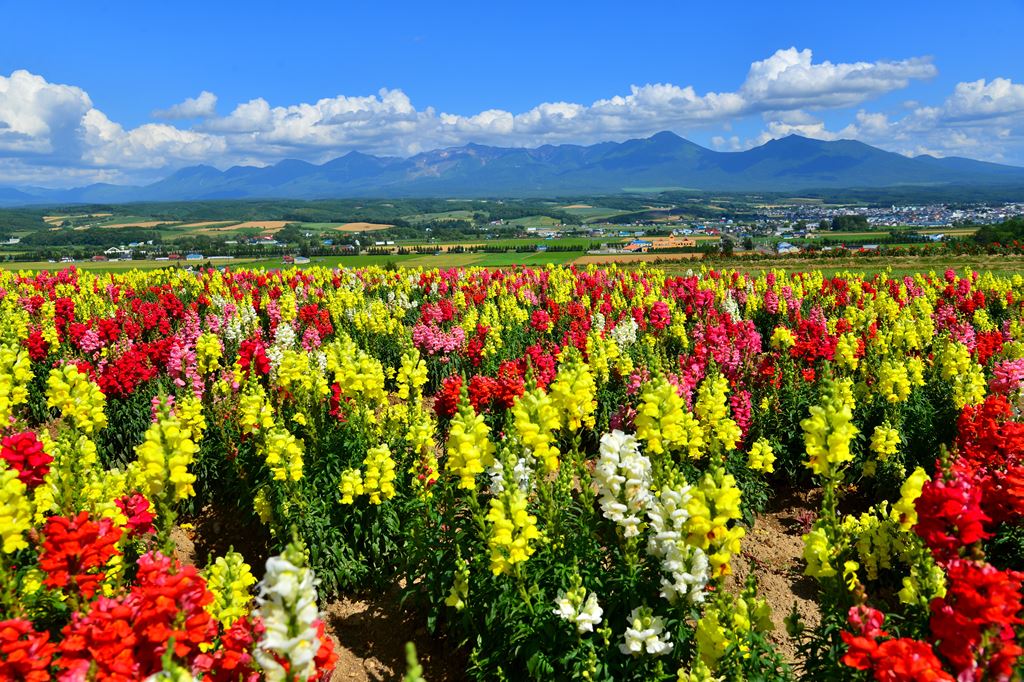
Flower Land Kamifurano, Flower garden with mountain view in Furano, Hokkaido Japan
Japan experiences summer from June to August, with the rainy season ending around mid-July (However, only Hokkaido does not have a rainy season) and the hottest months being late July and August. The temperature and humidity can be very high during this period, so it’s important to take precautions against heat stroke. Make sure to drink plenty of water, wear light and breathable clothing, and rest in cool places during the hottest part of the day.
In September, the temperature becomes a bit cooler, but the weather can be unstable and rainy as the country transitions from summer to fall. It’s important to bring a light raincoat or umbrella when going out during this time.
From July to October, the Japanese archipelago is subject to typhoons, so it’s important to pay attention to typhoon information. In case of a typhoon, follow the instructions of the local authorities and stay safe indoors.
Despite the hot and humid weather, there are still many great sights to see in Japan during the summer months. One popular activity is attending a summer festival or “matsuri”, which usually includes food stalls, music, and fireworks. Some famous summer festivals include the Gion Matsuri in Kyoto, the Nebuta Matsuri in Aomori, and Gujyo Odori in Gifu.
Another great option is to visit the beaches and islands of Japan. Okinawa, located in the south of Japan, is a popular destination for its crystal-clear waters and white sandy beaches. Other beaches worth visiting include Kamakura, Shonan, and Enoshima, all located near Tokyo.
Summer is also the perfect time to stroll through the beautiful flower fields of Furano and Biei in Hokkaido. These parks allow visitors to escape the hustle and bustle of the city and enjoy the natural beauty of Japan.
Finally, summer is also the best season for hiking in mountainous areas such as Mt. Fuji and Hakuba. The climbing season that allows you to reach the summit of Mount Fuji is from early July to early September. In addition, highland summer resorts such as Karuizawa and Kiyosato are recommended as they allow you to comfortably enjoy the beauty of Japan’s nature.
Autumn: October and November are the best months

Kegon falls and Chuzenji lake in Autumn Season from Akechidaira observation deck, Nikko, Japan.
Autumn in Japan is from September to November, with the weather being ideal for sightseeing. September is still a transition period from summer to autumn, and the weather can be unstable due to typhoons. However, from October to November, there is relatively little rainfall throughout the country, making it a perfect time to explore Japan.
One of the highlights of autumn in Japan is the changing of the leaves. In the alpine areas, the autumn leaf coloring begins in September, and in the plains, trees begin to change color in November. Tokyo and Kyoto are two of the best places to see the autumn foliage, with the leaves being at their best from late November to early December. The colorful leaves are truly a sight to behold and will make for some fantastic photos.
As winter approaches, it’s important to dress warmly. Be sure to bring a coat, gloves, and a hat. Layers are also a good idea, as the temperature can change throughout the day.
There are many great sightseeing spots in Japan during the autumn months. Some popular destinations include:
- Nikko: This World Heritage Site is known for its stunning autumn foliage, as well as its temples and shrines.
- Hokkaido: This northern island is a popular destination for its autumn colors, as well as its hot springs and seafood.
- Hakone: This hot spring town near Tokyo is a great place to enjoy the changing leaves while soaking in a hot spring.
- Kamikochi: This mountainous region in the Japanese Alps is a popular destination for its stunning scenery and autumn colors.
In addition to these destinations, there are many parks and gardens throughout Japan that are worth visiting during the autumn months. Some popular ones include Shinjuku Gyoen National Garden in Tokyo, Kiyosumi Teien in Tokyo, and Korakuen in Okayama.
Finally, it’s important to note that the autumn months are a popular time for tourism in Japan. Be sure to book your accommodations and transportation in advance to avoid disappointment. Enjoy your trip to Japan in the autumn, and take in all the beauty that this season has to offer!
We support your itinerary planning!
Click the button to get an overview of hotel information and popular tourist routes from all over Japan featured on our site. We’ve included comprehensive details to aid in planning your trip, so please make use of it.
Comprehensive checklist before traveling to Japan

Book flights
Compare and purchase flight tickets
When planning your trip to Japan, it's advisable to start by researching flights several months in advance. Airlines often release promotional fares, especially during off-peak seasons. Use comparison sites like Skyscanner or KAYAK to get a sense of the price range. Be flexible with your travel dates if possible; flying mid-week might be cheaper than on weekends.
>> Visit Skyscanner's official website
>> Visit KAYAK's official website
Order Japan Rail Passes for each family member
Purchase your Japan Rail Pass before departure
The Japan Rail (JR) Pass offers unlimited travel on JR trains, making it a cost-effective option for tourists. However, it's only available to foreign tourists and must be purchased *before* you arrive in Japan. Determine the areas you plan to visit; if you're traveling extensively, a nationwide pass is beneficial, but if you're only exploring a specific region, consider regional JR passes. Children under 12 get a discounted pass, so ensure you order the correct type for each family member.
>>Visit Japan Rail Pass's website
Plan your attire for Japan
Check the weather at your destination on this site
Japanese weather varies significantly by season. In summer, it's hot and humid, so breathable clothes are essential. Winters, especially in the north, can be cold, requiring warm attire. If visiting during the rainy season (June to early July), pack a good umbrella and waterproof shoes. While Japan is generally casual, certain places like temples, shrines, or upscale restaurants may require modest and neat dressing.
Reserve a pocket Wi-Fi or SIM card

SIM card or pocket Wi-Fi is required
Beyond clothes, consider packing essentials like a universal power adapter (Japan uses Type A and B sockets), portable Wi-Fi or SIM card for internet access, and any necessary medications (with a copy of the prescription).
Which is better: a SIM card or pocket Wi-Fi?
When traveling in Japan, one essential to consider is securing internet access, especially given that many locations still don't offer free Wi-Fi. To ensure you can use your smartphone throughout your trip, you'll typically have three options: (1) a SIM card, (2) pocket Wi-Fi, or (3) the roaming service provided by your mobile company. Roaming services can be quite expensive, so we often recommend using a SIM card or pocket Wi-Fi. While SIM cards tend to be more affordable than pocket Wi-Fi, they can be trickier to set up. Pocket Wi-Fi, on the other hand, can be shared among several users, making it a favorable choice for families or groups.
▼SIM card
Advantages:
Relatively affordable.
Disadvantages:
Can be time-consuming to set up initially.
May have strict data limits.
▼Pocket Wi-Fi
Advantages:
Offers substantial data allowances.
A single device can be shared among multiple users.
Easily usable with PCs as well.
Disadvantages:
Typically more expensive.
Japan's representative services

Sakura Mobile's website
▼SIM card
>>Visit Sakura Mobile's official website
>>Visit mobal's official website
▼pocket Wi-Fi
>>Visit Sakura Mobile's official website
>>Visit NINJA WiFi's official website
>>Visit Wi-Fi RENTAL Store's official website
Book local tours as needed
Pre-book your tour and have a great trip!
Local tours offer deep insights into Japan's culture and heritage. Websites like Viator or GetYourGuide offer a variety of tours, from traditional tea ceremonies to modern pop culture tours in Akihabara. Consider unique experiences like staying with monks on Mt. Koya or taking a cooking class to learn authentic Japanese dishes.
>>Visit Viator's official website
>>Visit GetYourGuide's official website
Purchase advance tickets for popular attractions
Make a reservation to avoid crowds
Attractions like Tokyo Disneyland, Universal Studios Japan, or the Studio Ghibli Museum often have long ticket queues. Buy tickets online in advance to save time. Some attractions also have timed entry, so check the specific time slots available and plan accordingly.
▼Tokyo Disney Resort
>>Visit Tokyo Disney Resort official website
>>Visit Viator's Tokyo Disneyland page
>>Visit Viator's Tokyo DisneySea page
>>Visit GetYourGuide's Tokyo Disneyland page
>>Visit GetYourGuide's Tokyo DisneySea page
▼Universal Studios Japan
>>Visit USJ official website
>>Visit Viator's USJ page
>>Visit GetYourGuide's USJ page
Buy travel insurance

insurance concept, health, life and travel insurance
It is important to be prepared for emergencies
While Japan is a safe country, travel insurance is crucial for unforeseen events like health emergencies, travel disruptions, or lost baggage. Ensure your policy covers medical expenses in Japan, as healthcare, though excellent, can be expensive.
Here we introduce online travel insurance services that are popular worldwide.
World Nomads: An online travel insurance service widely endorsed by travelers worldwide. They offer plans that cover adventurous activities and high-risk sports.
>>Visit World Nomads' official website
AIG Travel Guard: An insurance service available to travelers all over the world. They offer a wide range of options, including cancellation protection and emergency medical insurance.
>>Visit AIG Travel Guard's official website
Share your itinerary with emergency contacts
Organize your reservation information
Keep a digital and printed copy of your detailed itinerary, including hotel addresses, train schedules, and booked tours. Share this with a trusted family member or friend not traveling with you.

